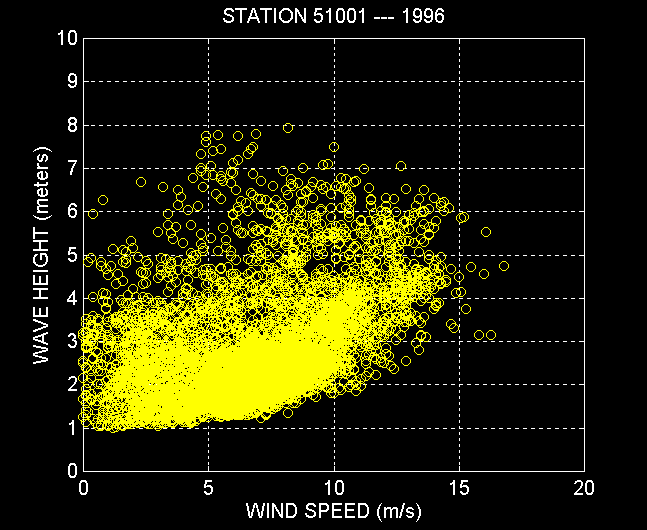What causes ocean surface waves?
As the wind blows, it "pushes" the ocean water ahead of it. The wind actually transfers some of its energy into the water. The water is able to "gain" energy from the wind because of the friction between the wind and the water. We can all test this by blowing over a cup of water and observing the "ripples" or waves that result. A simpler method of demonstrating the concept of friction is to place a pencil on table. Next, wave your hand across the top of the pencil and actually touch the pencil with the palm of your hand. The pencil should roll in the same direction that your hand is moving. This is how the wind reacts with the water to produce waves. Over the oceans and lakes, the waves that are generated as a result of the wind are called "wind-waves".
Let's use graphs to illustrate the wind and wave relationship. The graph below contains data pairs of wind speed and wave height from a station off of the Hawaiian Islands in the Pacific Ocean.

This plot shows one year of hourly data measured by sensors onboard NDBC buoy station 51001.
Well, why aren't the data points in the above graph linear? The graph shows many magnitudes of wave heights occurring as a result of a given wind speed. It seems that if the wind causes waves, a given wind speed would produce one and only one wave height.



